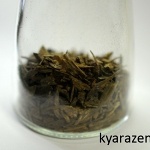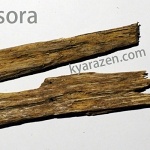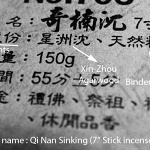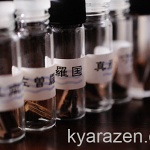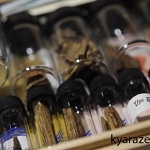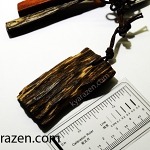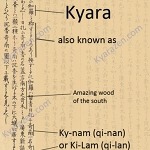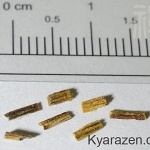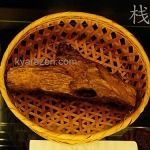Most of the agarwood powders on the market are generally made from ground up post-distilled agarwood chips, thus missing a large and important proportion of olfactory notes that could have existed in the non-distilled agarwood chips. As decent quality agarwood chips are expensive, powders made from these chips are just as expensive, if… [Read More…]
Two controversial identities of Golden Silk Kynam
金丝奇楠, or Golden silk kynam in modern day suffers two controversial identities. Under modern grading of authentic kynam, high end dealers in Hongkong occasionally classify some kynams as golden silk kynam due to the golden silky streaks of resin present in the wood, with the other grades being silver silk, coffee kynam, or simply normal… [Read More…]
Usage of Kynam or Kyara in the naming of modern Incense products
In the recent years, there are many incense products on the market that are marketed as “kynam incense” or “kyara incense”, of which many consumers are easily convinced to make a purchase without reading the fine prints. It seems that the Japanese incense companies are the only ones making incense with kyara/kynam, with some sticks… [Read More…]
Perspectives on the Rikkoku Gomi
The Rikkoku Gomi set was first assembled around the 15th Century with the establishment of a formalized “way/art” of the Incense by founder Sanjonishi Sanetaka (1455-1537 AD), a noble under the Muromachi Shogunate of Shogun Ashikaga Yoshimasa. Without the benefits of modern logistics, and being more isolated from the rest of the world, agarwood import… [Read More…]
Comparing Jinkoh and Kyara
A summary of the comparisons between normal aloeswood and kyara/kynam in a table. Enjoy!
How to store Kyara and fragrant woods
Kyara, being an extremely refined and rare fragrant wood material, should be protected from extremes and fluctuations in both humidity and temperature, dampness, light, and all other contaminating smells, including incense, perfumes, sandalwoods etc. It must be kept in an extremely clean and pure environment to preserve all its qualities and prevent damage or loss… [Read More…]
GCMS of Kynam
In one of the first few posts of the website, a video was shown where Chinese scientists, had performed a GCMS analysis of Kynam. Prior to this analysis, the scientists were skeptical about the existence of Kynam, they had done comprehensive analysis of most aloeswoods, and all the kynam that had gone to their lab… [Read More…]
Is there any difference between Kyara and Kinam?
Traditionally, the word 玉 or Jade refers to two types of beautiful stone materials, either the Chinese historical Nephrite (calcium magnesium sillicates), known for its creamy, smooth and elegant texture, or the Burmese Jadeite (sodium aluminum silicates), reknown for its lovely green hues and icy translucencies. However today, the word玉/Jade is now applied to… [Read More…]
Enjoying Kyara through Mon-Koh
Mon-Koh is loosely translated as “listening to incense” from the Japanese language. Kyara is best enjoyed using Japanese “mon-koh” methods, where a red hot coal is buried under ash in a ceramic cup, with a small ventilation hole prodded to provide air to the coal, and a slice of clean mica place on top before… [Read More…]
The Ancient Chinese Classifications of Aloeswood
Dating back to the Western Jin dynasty, and re-published in Song Dynasty and Ming dynasty records before it faded away, the ancient Chinese appeared to classify aloeswood by the following terms 蜜香, 沉香, 鸡骨香, 黄熟香, 栈香, 青桂香, 马蹄香, 鸡舌香. There are serious flaws in this ancient Chinese classification despite it being very commonly used… [Read More…]
